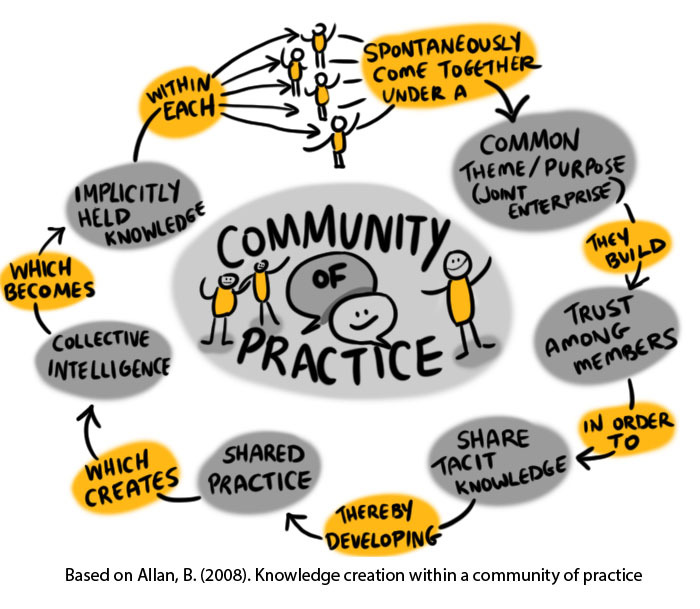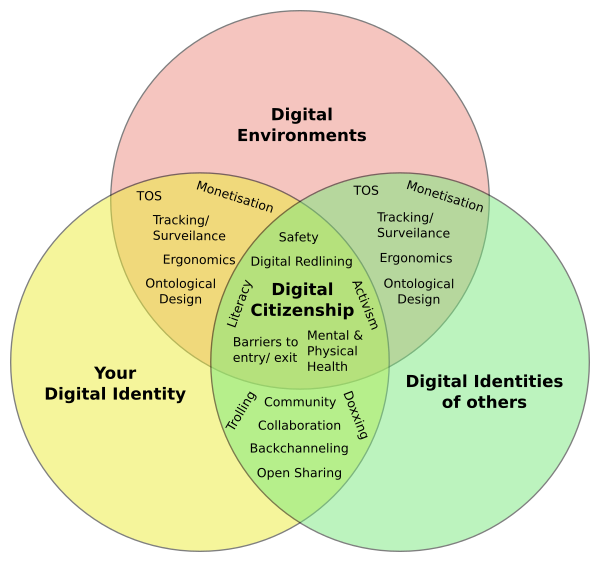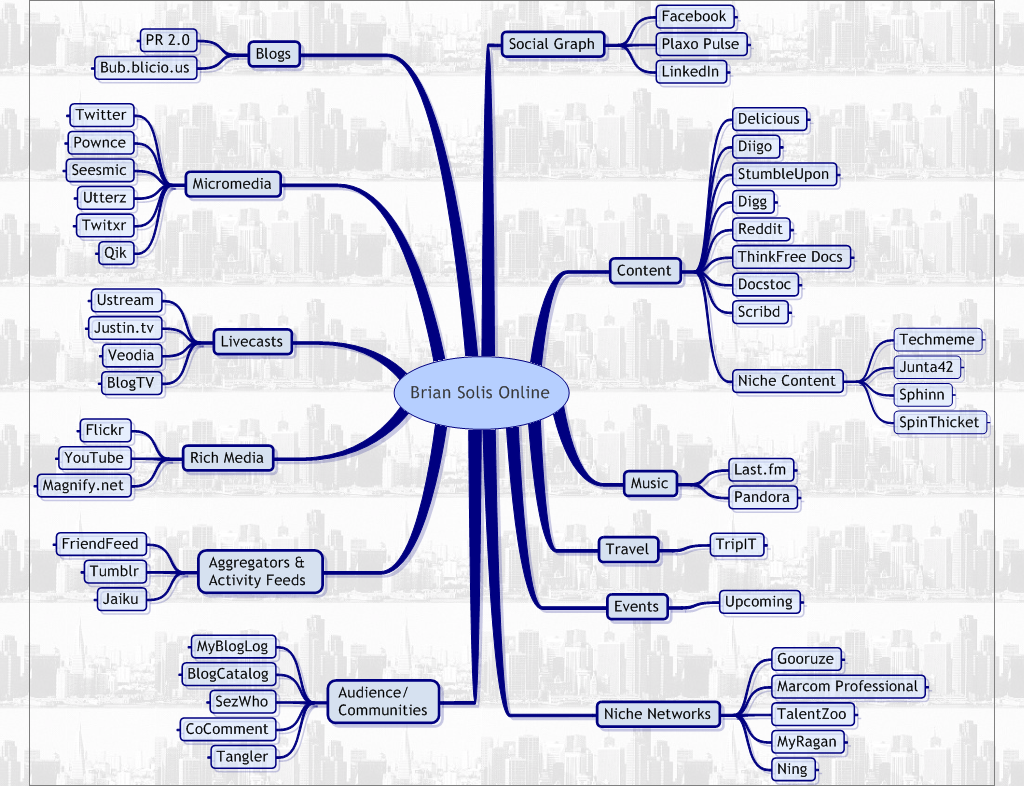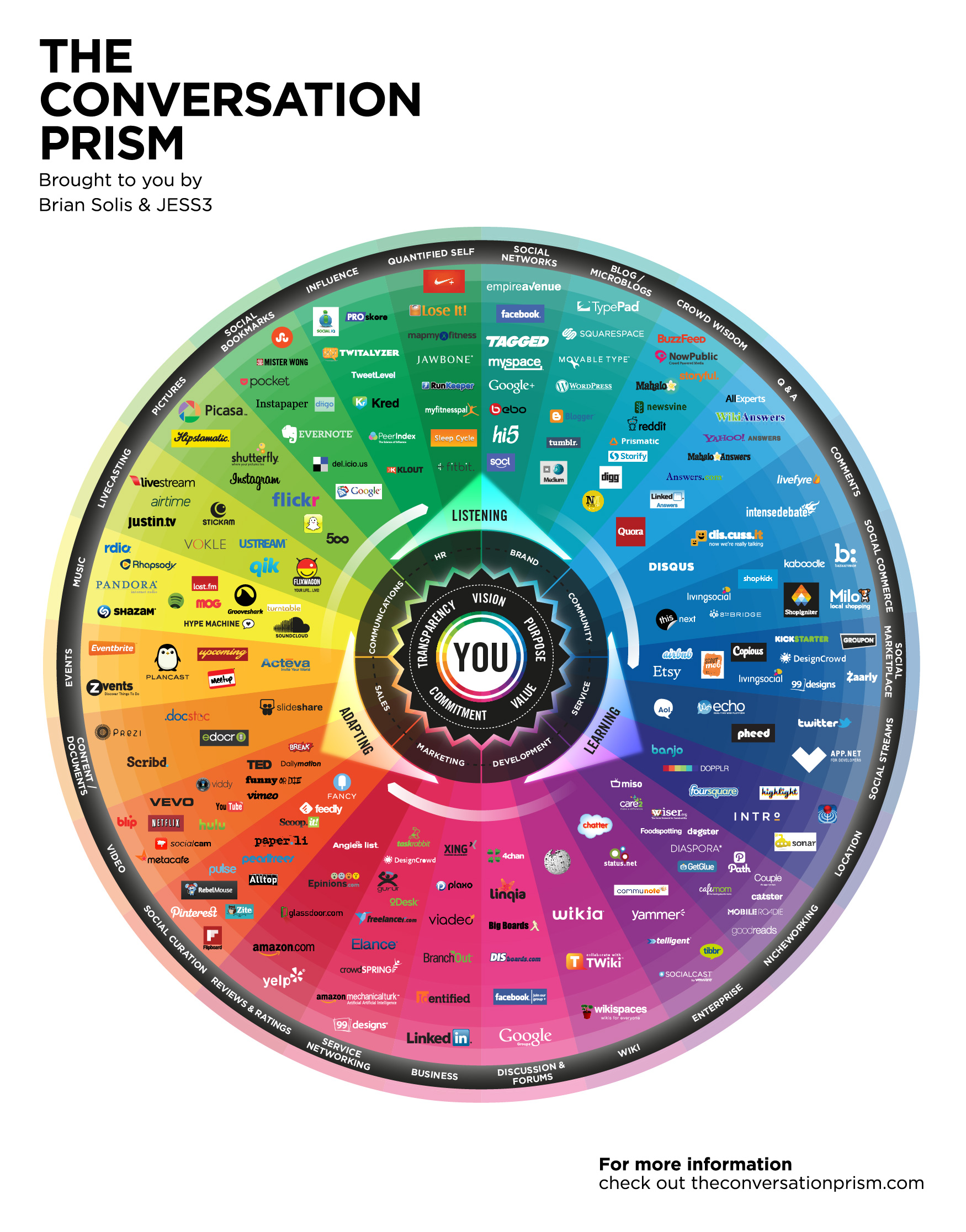Overview
In Unit 5 we engage in academic learning as a digital citizen of the internet. In this unit you will continue to develop a positive digital online identity in support of learning, while adhering to best practices for privacy, security, and interpersonal communications. We will discuss digital citizenship and how that relates to our personal and professional online identities. You’ll have the opportunity to evaluate your social networks and join online communities, including the TWU Learning Community. We hope you will take advantage of the opportunities to connect, build your personal and professional learning networks, and share your knowledge.
Topics
This unit is divided into the following topics:
- Digital Citizenship
- Online Communities
- Connecting and Learning Through Social Media
- Joining the TWU Community
Unit Learning Outcomes
When you have completed this unit you will be able to:
- Discuss the dimensions of digital citizenship for work and learning in the 21st century and how these differ from the offline environment
- Outline the rights and responsibilities of a digital citizen
- Explore professional online identity and networking in the field of your choice
- Reflect on the balance between public and private in a digital world
- Evaluate a range of social media, technologies, and communities appropriate for supporting learning
- Develop online learning networks to discover and share knowledge, collaborate with others, and become engaged digital global citizens
- Consider how you might connect, thrive, and serve in the TWU learning community
Learning Activities
Here is a list of learning activities that will benefit you in completing this unit. You may find it useful for planning your work.
Assessment
See the Assessment section in Moodle for assignment details.
Resources
- All resources will be provided online in the unit.
Tip: Remember to continuously add resources to your Zotero library that align with your learning goals.
5.1 Digital Citizenship
Before attempting to define digital citizenship, let’s consider the concept of citizenship in its own right. In its simplest form, citizenship refers to the rights, privileges, and duties of being a national citizen. However, the concept of being a good citizen encompasses much more, particularly if you think about full engagement as a member of society.
Citizenship is a status that is bestowed on those who are full members of a community(Marshall, 1950).
5.1.1 Activity: Reflecting on Digital Citizenship
Defining Digital Citizenship
Defining digital citizenship is not easy because it means different things to different people. It is also a concept which is debated among scholars researching the field.
If you conduct a general search for “digital citizenship” you will find many links referencing resources targeting elementary and high school levels with a focus on safe, skilled, and ethical use of online technology. While these aspects are important, for the purposes of this tertiary-level course, we need to explore the concept of digital citizenship in more detail.
Autumm Caines, (n.d.) provides a useful framework for thinking about digital citizenship:
- Digital identities: that is, who you are online including the identities of others (individuals and organizations)
- Digital environments: specifically the tools and online spaces we use to interact with each other; for example, Facebook, Discourse, X, blogs, forums, and so on.
- Interactions: between these identities and environments
5.1.2 Activity: Refined Definition of Digital Citizenship
Rights and Responsibilities
The concept of citizenship encompasses the rights and responsibilities of individuals. We need to consider what rights and responsibilities come with digital citizenship. In this next activity, we explore this topic with particular emphasis on the rights and responsibilities associated with learning in a digital age.
Following the hype of massive open online courses (MOOC) and the New York Times declaring 2012 the “year of the MOOC,” a small group of educators drafted A Bill of Rights and Principles for Learning in a Digital Age (Ng, 2013). This document forms the basis for a course discussion on the rights and responsibilities of digital citizens.
5.1.3 Activity: Rights and Responsibilities of Digital Citizens
Personal and Professional Identity
In short, digital citizenship is about being a person on the web. In the previous unit on building your online presence we noted that individuals portray different personas online; for example, personal, academic, and professional.
On the one hand, we need to be careful about what we post online because this can have a negative impact on future career prospects or current employment. We must also be cognizant of the different limitations that various careers place on what can be shared publicly and what needs to stay private. On the other hand, building a strong learning or professional network online is very powerful in staying up to date with new trends and establishing connections with your peers.
In this section, we reflect on the balance between public and private in a digital world, recognizing that this is going to be different for each person depending on their own environments and professional circumstances. We will also explore how like-minded professionals in your field of interest network online.
The … impact exercised by ICTs is due to at least four major transformations: “the blurring of the distinction between reality and virtuality,” “ the blurring of the distinction between human, machine and nature,” “the reversal from information scarcity to information abundance,” and “the shift from the primacy of stand-alone things, properties, and binary relations, to the primacy of interactions, processes and networks. (Floridi, 2015, p. 2)
5.1.4 Activity: Professional Online Identity and Digital Citizenship
5.1.5 Activity: Blog: Professional Online Identity and Digital Citizenship
5.1.6 Activity: Blog: My Online Biography
5.2 Online Communities
In this section we explore the topic of online communities and how we can engage in social media to enhance our learning.
In the early years of the internet there was strong research interest in studying the differences between virtual and real communities. However, in more recent years we have observed a blurring of the boundaries between online and real communities. In The Difference Between Online & Real Life Community? (2013)Alison Michalk states:
Community boundaries are blurred to the extent that the Internet is nothing more than a conduit for communication. The Internet is now just another tool that we use to communicate within our various communities. The same as we use mail, telephone and even a car to keep in touch with our friends, family and colleagues. Our ‘real life communities’ are not mutually exclusive from our ‘online communities’ given that it all comes down to implied physical presence. (2013, para. 2)
So how do we join and contribute constructively to these digital communities? If you don’t have much experience with online communities, we encourage you to participate in the course forums and become an active member of the TWU learning community.
Research on Online Communities
Research on the efficacy of online communities provides insights on selecting productive communities and how to engage. Community contributors can be classified into three types (Mocus et al 2002):
- Core members are responsible for guiding the development of the community and have usually been involved with the community for a long time. These members have made significant contributions to the community’s evolution and have earned leadership status. Frequently they also play an active role in moderation of the group.
- Active members make regular contributions to the community.
- Peripheral members occasionally contribute to the discussions and the periods of engagement are short and sporadic. “Lurkers”, that is individuals seeking answers without making contributions, are normally associated with this group. The nature of engagement in a community is influenced by the community’s life cycle stage (A. Iriberri and G. Leroy 2009):
| Life cycle stage | Characteristics |
|---|---|
| Inception stage | Focus is on determining the purpose, codes of conduct, funding and sustainability |
| Creation stage | User-centred design and evolution including issues of privacy, anonymity, open versus closed communications |
| Growth stage | Focus is on community building, for example, recruiting members, growth management, integrating new members, trust building, up-to-date content, interaction support, a few offline and online events and meetings |
| Maturity stage | By this stage a community culture will have emerged with identifiable community leaders. Focus shifts to permeated management and control, recognition of contributions, recognition of loyalty, member satisfaction management and subgroup management. |
Additional factors identified by the research to keep in mind include:
- Network cohesion, that is the overall level of connections indicated by the network density has a positive impact on the core group as well as the success of the community (Toral et al 2010)
- Network structure. Successful communities need a critical mass of contributors, however there is no fixed number that determines success. Most communities can expect between 45–90 % of nonactive members, but communities with a strong and experienced core group will have a positive impact on success (Nonnecke & Preece, 2000, as cited in Toral et al., 2009). Moreover, the positive effects of network structure on participation persist irrespective of the life cycle stage of the community, and activity participation influences network structure (Igl 2014)
- Centralization. Communities with a high degree of centralization and control exert a negative impact on all participation variables (Igl, 2014).
Practical Implications
There are many online communities, and it will be worth your effort in doing a little online research to determine the network cohesion and network structure of the community. You will be able to determine this by reviewing the archive history. Avoid communities with overly centralized control; in the long run, they are not likely to be productive.
When joining an online community try to identify its life cycle stage by scanning the archive of posts. Young communities are likely to be more tolerant of newbie questions, as responses to these questions will provide support resources for new members in the future. It’s a good idea to search the forum for your answer before posting a question. Don’t be surprised if newbie questions go unanswered in mature communities; they may can even attract curt rebuttals. If you’re a longstanding member of the community, post a tactful reply, for example, “Your question has already been answered” and post a link to the appropriate reply.
The best advice when joining a new community is to lurk for a while before introducing yourself so that you can become familiar with the culture and practices of the community. Fill out your profile page on the forum site, rather than posting a biography in the main discussion threads. Of course, if the community is in the creation phase, you may want to play a more active role in building the community and becoming part of the core contributors.
Communities of Practice

Source: Community of Practice by Efrem Efre. Copyright: 2017. License Text: Public Domain.
As you continue to reflect on your social network and consider other learning networks to join for personal or professional growth, we want to present another framing of an online community called a community of practice.
A community of practice is a group of people who “share a concern or a passion for something they do and learn how to do it better as they interact regularly” (Wenger-Trayner, 2015).
Cognitive anthropologists Jean Lave and Etienne Wenger coined the term community of practice when studying apprenticeships as a learning model—the term referred to the community that acts as a living curriculum. Once the concept was articulated the researchers started to see communities everywhere, even when no formal apprenticeship system existed.
The basic premise behind communities of practice is simple: we all learn in everyday life from the communities in which we find ourselves. Communities of practice are everywhere. Nearly everyone belongs to some community of practice, whether it is through our working colleagues or associates, our profession or trade, or our leisure interests, such as a book club.
Wenger-Trayner (2015) argues that a community of practice is different from a community of interest or a geographical community in that it involves a shared practice: ways of doing things that are shared to some significant extent among members.
Characteristics of a Community of Practice
According to Wenger-Treyner (2015) there are three crucial characteristics of a community of practice:
- Domain: A common interest that connects and holds together the community;
- Community: A community is bound by the shared activities they pursue (for example, meetings, discussions) around their common domain;
- Practice: Members of a community of practice are practitioners; what they do informs their participation in the community; and what they learn from the community affects what they do.Wenger- Treyner has argued that although individuals learn through participation in a community of practice, more important is the generation of newer or deeper levels of knowledge through the sum of the group activity. If the community of practice is centered around business processes, for instance, this can be of considerable benefit to an organization.
Types of Communities of Practice
Today, communities of practices are increasingly being used to improve knowledge management and connect people within business, government, education, and other organizations.
The design of the community will look different depending on the purpose and needs of the participants. There are four basic types of communities:
- Helping communities provide a forum for community members to help each other with everyday work needs
- Best practice communities develop and disseminate best practices, guidelines, and strategies for their members’ use
- Knowledge stewarding communities organize, manage, and steward a body of knowledge from which community members can draw
- Innovation communities create breakthrough ideas, new knowledge, and new practices
As you reflect on digital practices in university and the workplace, consider how engaging in a community of practice could benefit you as a learner and in your future career.
5.2.1 Activity: What Is a Community of Practice?
5.4 Connecting to the TWU Community
Our final topic focuses on the TWU community and how you can participate online, and if possible, on campus. As a TWU student you have the opportunity to connect with a diverse student body, faculty, and staff. What role does technology play in how you communicate with your peers, collaborate on projects, and build relationships?
In this unit we have discussed what it means to be a digital citizen and how we can engage with online communities. How does this apply to you as a TWU student? As we wrap up this unit, we encourage you to reflect on your personal and academic goals and how you can engage with the TWU community.
5.4.1 Activity: TWU’s Learning Community
Summary
In this unit you have had the opportunity to learn what it means to be a digital citizen, including the rights and responsibilities we should abide by. You have had the opportunity to explore and connect with an online community and have reflected on your personal and academic goals for networking. Finally, you have considered your role as a TWU student and how you might build connections with peers, faculty, and staff. As we move on to our final unit, consider how you might share your knowledge online and create an inclusive digital community.


